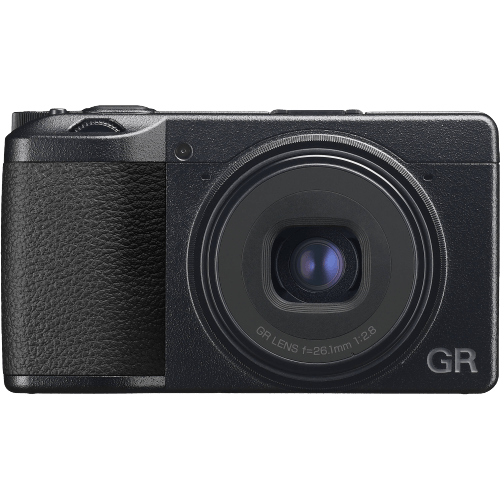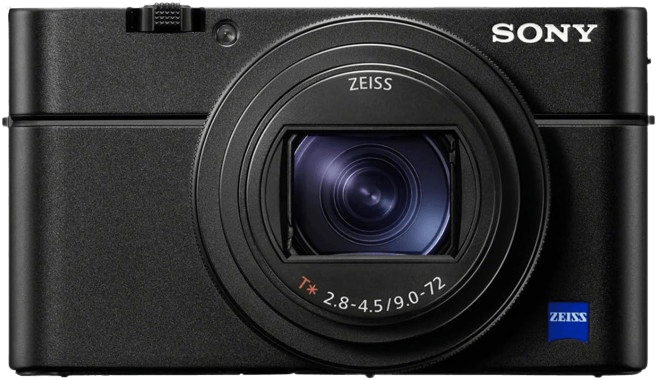Ricoh GR IIIx vs Sony Cyber-shot DSC-RX100 VII Comparison
Ricoh GR IIIx

Sony RX100 VII

The Ricoh GR IIIx takes the lead with a score of 66/100, while the Sony Cyber-shot DSC-RX100 VII trails behind at 60/100. Both cameras are compact and were released in 2021 and 2019, respectively. They share similarities in their camera type and launch prices of $999 (Ricoh) and $1200 (Sony).
The Ricoh GR IIIx stands out with its smaller size (109 x 62 x 35mm) and lighter weight (262g), making it more portable and convenient for on-the-go photography. On the other hand, the Sony Cyber-shot DSC-RX100 VII has a slightly larger size (102 x 58 x 43mm) and heavier weight (302g), which may not be as appealing for those prioritizing portability.
Despite the differences in scores and specifications, both cameras offer unique features that cater to different needs and preferences. The Ricoh GR IIIx is ideal for those seeking a compact and lightweight camera, while the Sony Cyber-shot DSC-RX100 VII may be a suitable option for those who don’t mind a slightly larger and heavier device.
Ricoh GR IIIx vs Sony Cyber-shot DSC-RX100 VII Overview and Optics
The Ricoh GR IIIx outperforms the Sony Cyber-shot DSC-RX100 VII in optics, scoring 68 out of 100 compared to the Sony’s 61. Both cameras share common specs, such as CMOS sensor type, fixed lens mount, and image stabilization. However, there are key differences that make the Ricoh GR IIIx a better choice in terms of optics.
The Ricoh GR IIIx has a higher megapixel count at 24 compared to the Sony’s 20, allowing for more detailed and higher-resolution images. Additionally, the GR IIIx boasts a more advanced processor, the GR Engine 6, which contributes to better image quality and faster processing times. The camera also has a larger sensor size, APS-C, as opposed to the Sony’s 1″ sensor. This results in better low-light performance and overall image quality. Furthermore, the DXOMARK score for the Ricoh GR IIIx sensor is 76, while the Sony only scores 63, indicating superior sensor performance in the Ricoh model.
On the other hand, the Sony Cyber-shot DSC-RX100 VII has a faster shooting speed of 5 compared to the Ricoh’s 4. This means the Sony camera can capture more images in a shorter period of time, which may be beneficial for action or sports photography. However, this advantage is not enough to outweigh the superior optics of the Ricoh GR IIIx.
Considering the factors mentioned above, it is evident that the Ricoh GR IIIx offers better optics than the Sony Cyber-shot DSC-RX100 VII. The higher megapixel count, more advanced processor, larger sensor size, and better DXOMARK score all contribute to the Ricoh GR IIIx’s superior performance in optics. While the Sony camera has a faster shooting speed, it does not compensate for the overall better quality provided by the Ricoh model.
Ricoh GR IIIx vs Sony Cyber-shot DSC-RX100 VII Video Performance
The Sony Cyber-shot DSC-RX100 VII outperforms the Ricoh GR IIIx in video capabilities, with a score of 91/100 compared to the Ricoh’s 70/100. Both cameras share some common video features, such as having time-lapse functionality built in. However, the Sony RX100 VII surpasses the Ricoh GR IIIx in several key aspects.
The Sony RX100 VII boasts a higher maximum video resolution of 4K (3840 x 2160), while the Ricoh GR IIIx only offers Full HD (1920 x 1080). This significant difference in resolution provides the Sony RX100 VII with more detailed and sharper video quality. Additionally, the Sony RX100 VII has a higher maximum video frame rate of 120fps, enabling smoother slow-motion video capture, whereas the Ricoh GR IIIx only reaches 60fps.
Despite these advantages, the Ricoh GR IIIx still maintains its value with its Full HD video resolution. For users who do not require 4K video quality, the Ricoh GR IIIx may suffice for their needs. However, it is evident that the Sony RX100 VII offers superior video capabilities, making it the better choice for those who prioritize video performance.
Considering the specifications and the video scores, the Sony Cyber-shot DSC-RX100 VII is the clear winner in terms of video capabilities. While the Ricoh GR IIIx can still produce satisfactory video results, the Sony RX100 VII is the better camera for users who need higher video quality and performance.
Ricoh GR IIIx vs Sony Cyber-shot DSC-RX100 VII Features and Benefits
The Ricoh GR IIIx wins the feature comparison with a score of 70/100, while the Sony Cyber-shot DSC-RX100 VII scores 68/100. Both cameras share several specifications, including a 3-inch touchscreen, GPS absence, and WIFI and Bluetooth connectivity.
The Ricoh GR IIIx outperforms the Sony Cyber-shot DSC-RX100 VII in screen resolution, offering 1,037,000 dots compared to the Sony’s 921,000 dots. This higher resolution provides clearer and more detailed image previews and menu navigation on the Ricoh GR IIIx.
On the other hand, the Sony Cyber-shot DSC-RX100 VII has a flip screen, a feature absent in the Ricoh GR IIIx. This flip screen allows for easier framing of shots from various angles and is particularly useful for vlogging or taking selfies.
In comparing the features of these cameras, the Ricoh GR IIIx’s higher screen resolution offers better image preview and menu navigation. However, the Sony Cyber-shot DSC-RX100 VII’s flip screen provides versatility in framing shots, making it a more suitable choice for those who prioritize flexibility in shooting angles. Both cameras have their unique strengths, and the ideal choice will depend on the specific needs and preferences of the user.
Ricoh GR IIIx vs Sony Cyber-shot DSC-RX100 VII Storage and Battery
The Sony Cyber-shot DSC-RX100 VII outperforms the Ricoh GR IIIx in storage and battery, scoring 29/100 compared to the Ricoh’s 27/100. Both cameras have one memory card slot and support USB charging. They accept SD, SDHC, and SDXC cards, with the Sony also supporting Memory Stick Pro Duo.
The Sony’s superior score is due to its longer battery life of 260 shots, compared to the Ricoh’s 200 shots. The battery type for the Sony is NP-BX1, while the Ricoh uses a DB-110 battery. This longer battery life gives the Sony an edge in extended shooting sessions.
On the other hand, the Ricoh GR IIIx has internal storage in addition to its memory card compatibility, offering a slight advantage in terms of storage capacity. However, this advantage is not significant enough to offset the Sony’s overall better performance in storage and battery.
In comparing the Ricoh GR IIIx and Sony Cyber-shot DSC-RX100 VII, the Sony emerges as the better choice for storage and battery performance, primarily due to its longer battery life.
Ricoh GR IIIx vs Sony Cyber-shot DSC-RX100 VII Alternatives
Still not ready to make a decision? Check out these popular camera comparisons for inspiration:
